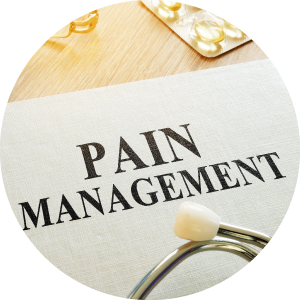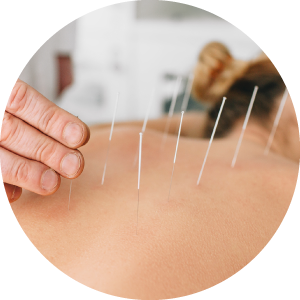Learning Objectives
By the end of this topic, the student should be able to:
- Identify pharmacological and non-pharmacological interventions for the management of pain.
- Describe the risks and benefits of therapeutic interventions for pain medication.
- Develop a plan of care that includes educating persons experiencing pain about alternative interventions.
- Demonstrate an appreciation of pain as a private, individualized experience affected by multiple factors.
Key Concepts
- Pain is an individual experience for each person and is affected by multiple factors, including age, gender, culture, previous experience of pain, anxiety, fear, and so on.
- Pain tolerance is also an individual experience that can vary depending on the situation within which the person is experiencing pain.
- The goal of pain management is improved function and a reduction in the intensity and frequency of symptoms, not necessarily the complete elimination of pain. Realistic expectations and frequent reassessment are recommended as a means of recognizing incremental gains and refocusing goals.
- Numerous non-pharmacological interventions, such as relaxation, meditation, and massage, have been shown to be effective in ameliorating pain.
- Different types of pain may respond differently to pharmacological and non-pharmacological interventions.
- Management of pain requires a detailed and comprehensive assessment of pain, as well as regular and frequent reassessments.
- Trials of non-opioid interventions need to be adequate in terms of duration, dosage, and frequency and include pain reassessment.
- Non-pharmacological options may be used alone or in combination with pharmacological interventions to develop a comprehensive, individualized plan of care.
- Optimal management of chronic pain requires a multidisciplinary team approach.
- Opioids used in the management of chronic non-cancer pain should be administered on a regular schedule, not as needed (PRN).
- Trusting relationships between health and social service providers and persons experiencing pain are required for optimal care. The plan of care should always incorporate the person’s goals.
Treatment of Pain

designer491/iStock
Numerous and varied pharmacological and non-pharmacological interventions are available to people experiencing pain, whether acute or chronic. The use of a pain management intervention may be limited by:
- side effects
- risks
- cost
- availability
- efficacy, or
- the availability of needed support.
A combination of optimum pharmacological and non-pharmacological interventions is the best approach for most people.
NOTE: The likelihood that pain management will be successful is increased by a trusting relationship between the person and the health and social service provider, and the availability of an interdisciplinary team to assist in pain management.
Non-Pharmacological Interventions for Pain Management
A variety of non-pharmacological interventions are available for the management of acute and chronic pain that vary in efficacy. Those that have shown small to moderate effects in managing pain include the following:
Acute Pain
- Reassurance – client education focusing on the likelihood of a positive outcome has shown benefit in treating acute back pain. In general, a confident and reassuring attitude on the part of the health and social service provider is recommended when treating people experiencing pain.
- Diversion or distraction – using visual or auditory distractions such as virtual reality and relaxation music, respectively, has been shown to reduce the experience of acute pain (De Silva et al., 2016).
- Application of cold packs and heat – using a combination of cold and heat therapy has been shown to improve acute low back pain (Dehghan & Farahbod, 2014).
Chronic Non-Cancer Pain

peakSTOCK/iStock
- acupuncture and acupressure
- massage
- physiotherapy (specific targeted exercises, such as stretches)
- low-level laser therapy
- yoga
- tai chi
- application of heat or cold
- psychotherapy, such as cognitive behavioural therapy (CBT), acceptance and commitment therapy (ACT), operant therapy, progressive relaxation, electromyography feedback, mindfulness meditation
- music therapy
- pet therapy
- therapeutic touch
- transcutaneous electrical nerve stimulation (TENS)
Benefits
Non-pharmacological interventions generally carry a low risk for side effects and adverse events.
Drawbacks
- Non-pharmacological interventions can be prohibitively expensive for persons who have no additional health care coverage or who are geographically disadvantaged in terms of access.
- Access to clinician-led interventions (e.g., psychologist, occupational therapist) can be difficult and expensive.
- There are digital options for CBT and other behavioural methods, as well as mindfulness meditation, but these can also be expensive, and the efficacy of these approaches is not well known.
Pharmacological Interventions for Acute Pain
A variety of non-opioid and opioid analgesics reduce acute pain.

DragonImages/iStock
Acetaminophen
Acetaminophen is used for mild to moderate pain.
Risks
- hepatotoxicity (liver damage) with overuse or in persons with active liver disease
Benefits
- fewer side effects and adverse events than full-dose non-steroidal anti-inflammatories
Non-Steroidal Anti-Inflammatories (NSAIDS)
NSAIDs including ibuprofen, naproxen, and ketorolac. They are used to manage mild to moderate acute pain.
Risks
- gastrointestinal upset, peptic ulcer disease
- must be used with caution in persons with asthma, heart failure, renal failure, and hypertension
Benefits
- effective analgesic, antipyretic, and anti-inflammatory
Opioids
Opioids, including morphine, hydromorphone, and oxycodone, have potent analgesic effects.
Risks
- depression of physiological systems
- central nervous system (decreased respirations, sedation), and gastrointestinal system (constipation)
- long-term use can cause hormonal changes that can result in changes in mood, sexual function, amenorrhea (absence of menstruation), gynecomastia (breast enlargement), hyperalgesia (when opioids worsen pain instead of improving it), tolerance, dependence and withdrawal, and opioid use disorder (from Module 7, Topic B)
- risk for overuse, abuse, diversion
Benefits
- no major organ toxicity
Pharmacological Interventions for Chronic Pain
In addition to the treatments available to relieve acute pain, chronic pain can also be treated with other pharmacological interventions.
Tricyclic Antidepressants
Tricyclic antidepressants such as nortriptyline, desipramine, and amitriptyline.
Risks
- anticholinergic effects (dry mouth, constipation, urinary hesitancy, urinary retention in persons with benign prostatic hypertrophy, tachycardia)
- orthostatic hypotension
- delirium
- lowered seizure threshold
- sexual dysfunction
- cardiac arrhythmia, Q-T prolongation
Benefits
- effective in treating neuropathic pain
- improves sleep
Serotonin Norepinephrine Reuptake Inhibitor (SNRI) Antidepressants
SNRI antidepressants such as venlafaxine and duloxetine.
Risks
- CNS effects: drowsiness
- fatigue
- GI upset, nausea
- sleep disturbance
- dose-related hypertension (>225 mg per day of venlafaxine)
Benefits
- effective for neuropathic pain
Anticonvulsants
Anticonvulsants such as gabapentin, divalproex, topiramate, pregabalin, and carbamazepine
Risks
- relatively common for most anticonvulsants: dizziness, somnolence, headache, confusion or abnormal thinking, weight gain or weight loss
- gabapentin and pregabalin can be associated with misuse
Benefits
- demonstrated efficacy in the treatment of neuropathic pain and migraine prophylaxis (gabapentin, divalproex, topiramate)
- may be useful against sharp, stabbing, or zinging pain
- pregabalin has been shown effective in the treatment of postherpetic neuralgia, diabetic neuropathy, and fibromyalgia and has a positive effect on sleep
Cannabinoids
Cannabinoids, which include CBD (cannabidiol)/THC (tetrahydrocannabinol) in cannabis plant material and pharmaceutical cannabinoids.
Risks
(listed in order of decreasing frequency)
- CNS effects: sedation, dizziness, ataxia, numbness
- disturbance in attention or disconnected thoughts, impaired memory, disorientation or confusion
- blurred vision or visual hallucinations
Benefits
NOTE: very low-quality evidence from studies (Mücke et al., 2018)
- chronic pain (neuropathic and cancer): ~30% efficacy of cannabinoids
- neuropathic pain: ~30% efficacy of cannabinoids
- could consider for refractory neuropathic pain or for pain in palliative care
Topical Anesthetics
Topical anesthetics, including lidocaine topical 5% and lidocaine/xylocaine 5% for localized pain.
Risks
- few; possible local reaction
- unintended non-adherence or errors in administration—patch should be used 12 hours on and 12 hours off for localized pain
Benefits
- effective in postherpetic neuralgia.
- can be used for localized neuropathic pain if oral medication contraindicated
Topical Capsaicin
Topical capsaicin which includes capsaicin 0.025% or 0.075%.
Risks
- local burning, stinging, or erythema
- needs an adequate trial of 6–8 weeks
Benefits
- efficacy in treating neuropathic pain and musculoskeletal pain
Topical NSAIDs
Topical NSAIDs, such as diclofenac and ketoprofen (compounded).
Risks
- little evidence of efficacy in chronic non-cancer pain
- local irritation
Benefits
- fewer systemic side effects than oral preparations
Questions
References
Busse, J. W., Craigie, S., Juurlink, D. N., Buckley, D. N., Wang, L., Couban, R. J., Agoritsas, T., Akl, E. A., Carrasco-Labra, A., Cooper, L., Cull, C., da Costa, B. R., Frank, J. W., Grant, G., Iorio, A., Persaud, N., Stern, S., Tugwell, P., Vandvik, P.(2017). Guidelines for opioid therapy and chronic noncancer pain. CMAJ, 189(18), E659–E666. https://doi.org/10.1503/cmaj.170363
Canadian Pharmacists Association. (2020). Acute pain. RxTx [Mobile app]. https://www.pharmacists.ca/products-services/rxtxmobile/
Centre for Effective Practice. (2018). Chronic non-cancer pain. https://cep.health/clinical-products/chronic-non-cancer-pain/
Dehghan, M., & Farahbod, F. (2014). The efficacy of thermotherapy and cryotherapy on pain relief in patients with acute low back pain, a clinical trial study. Journal of clinical and diagnostic research. Journal of Clinical and Diagnostic Research, 8(9), LC01.
De Silva, A. P., Niriella, M. A., Nandamuni, Y., Nanayakkara, S. D., Perera, K. R. P., Kodisinghe, S. K., Subasinghe, K. C., Pathmeswaran, A., & de Silva, H. J. (2016). Effect of audio and visual distraction on patients undergoing colonoscopy: A randomized controlled study. Endoscopy International Open, 4(11), E1211–E1214.
Kline, G. A. (2009). Does a view of nature promote relief from acute pain? Journal of Holistic Nursing, 27(3), 159–166.
Leonard, G., Tousignant-LaFlamme, Y., & Mercier, C. (2013). How reassurance and pain management strategies can improve outcomes in physiotherapy: A case report. International Journal of Rehabilitation Research, 36(1), 88–90.
Lilley, L. L., Rainforth Collins, S., Snyder, J., & Stewart, B. (2017). Pharmacology for Canadian health care practice (3rd ed.). Elsevier Canada.
Monroe, C. M. (2009). The effects of therapeutic touch on pain. Journal of Holistic Nursing, 27(2), 85–92.
Mücke, M., Phillips, T., Radbruch, L., Petzke, F., & Häuser, W. (2018). Cannabis‐based medicines for chronic neuropathic pain in adults. Cochrane Database of Systematic Reviews, 3(3), Article CD012182.
Potter, P. A., Perry, A. G., Ross-Kerr, J. C., Wood, M. J., Astle, B. J., & Duggleby, W. (2017). Canadian fundamentals of nursing (6th ed.). Elsevier.
Registered Nurses’ Association of Ontario. (2013). Assessment and management of pain (3rd ed.).
RxFiles Academic Detailing. (2019). Objective comparisons for optimal drug therapy—Chronic noncancer pain: General considerations. Saskatchewan Ministry of Health.